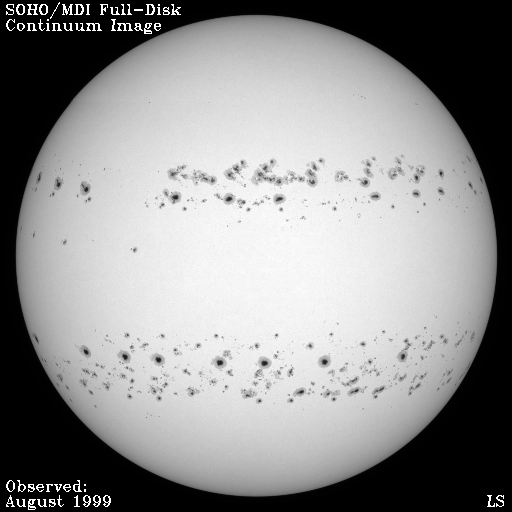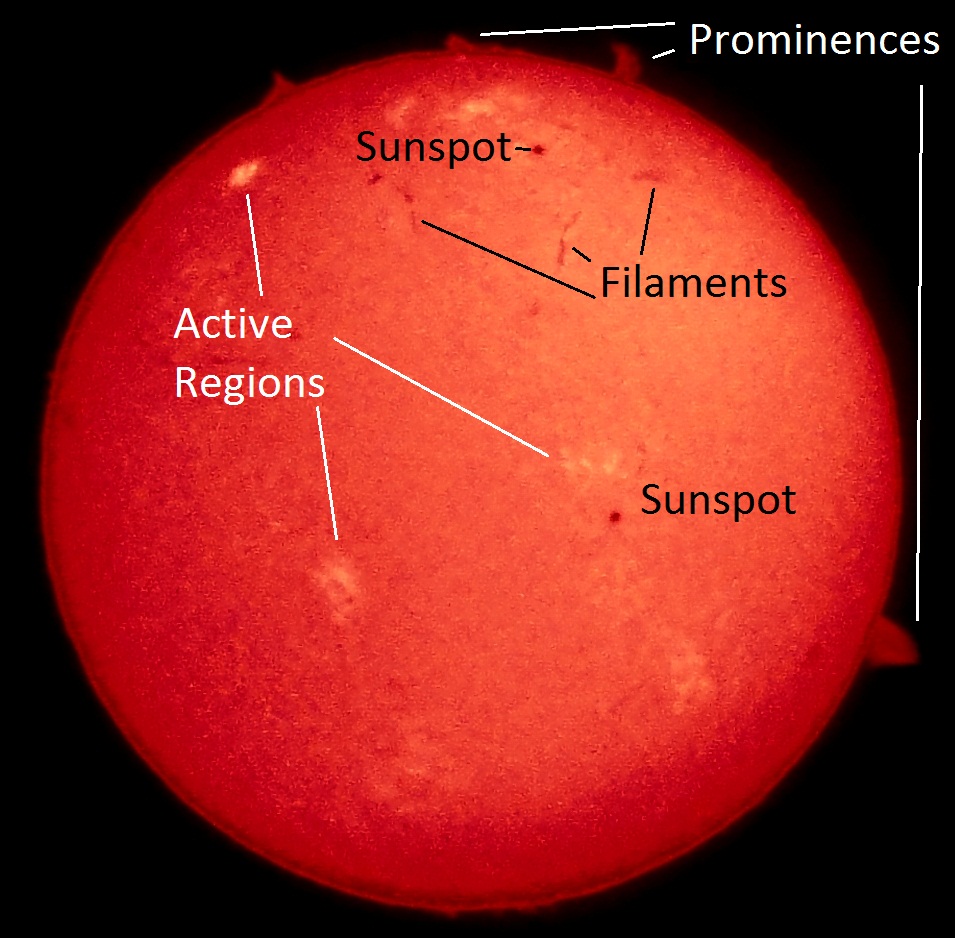First, never look at the sun without an appropriate filter in place. Instant and permanent eye damage can occur.
Solar Astronomy is by far the easiest way to connect to the universe in a school setting. It takes only a few minutes, it’s not after school, nor past anyone’s bedtime. A bright sky in an urban setting is no hindrance.. Sure, there is only one thing to look at, but it’s different every day. It’s dynamic. It moves. It rotates a bit every day. With a Hydrogen-alpha solar telescope, you can watch the Sun’s weather. Over the course of a week you can see a loopy solar prominence or flare transit across the face of the sun to become a prominence on the other side.
Much like a beautiful sunset makes you feel really blessed to witness the beauty of nature, watching a big storm playing out over a the face of the Sun does make you feel like you’re connected to something big. The universe itself reveals itself to be alive and dynamic. All this can be experienced in a couple of minutes any time the sun is visible.
|
The sun is a great observing target, if you have appropriate equipment.
In some ways it's the perfect target: Observing the sun can be done from anywhere (urban light pollution and dirty urban air have little on what you can see); it can be done during the day (when it's convenient and warm). While you're only looking at one celestial object, the sun's activity changes from day to day. Sunspots vary in number and size. Hydrogen-alpha viewing (shown to the right) also allows viewing of other solar features, such as Prominences, Flares, Sunspots, Active Regions and Filaments. The sun rotates once every 25 days or so. Over the course of a week you can see the features move across the disk. |
The picture above was shot with a Point-and-Shoot digital camera held up to the eyepiece of a Coronado PST (double-stacked). Solar Photography is, clearly, pretty easy. |
There are two common types of Solar Observing available to the amateur: White Light and Hydrogen-alpha.
White Light
Pros: White-light Solar Filters for your telescope are cheap (anywhere from $30 to $100 for small to medium scopes), Sunspots are easy to see with them.
| The shot to the right shows the best two aspects of white light observing: sunspot detail and solar rotation.
A couple of sunspot groups is shot repeatedly over a period of about two weeks as the sun rotated. The center of the sunspots and the "penumbra" are easily visible and look similar to what you would see in a medium scope (6" to 8" reflector). |
 |
The cons of detachable solar filters is that if they detach while you're viewing them (unlikely, but not inconceivable) eye damage will occur. For telescope programs, this is a liability to be weighed heavily. For school programs for younger children, presenting habit of looking at the sun may task their judgment too heavily.
Another alternative is a special diagonal called a Hershel Wedge, which safely eliminates the excess radiation and can be used immediately on just about any refractor or SCT telescope.
Sunspot info is updated daily at: http://spaceweather.com/
Hydrogen-Alpha
Hydrogen-Alpha is a very specific wavelength of light. Blocking out all other wavelengths of light allows us to see a very active region of the sun. In addition to sunspots, bright Active Regions and Prominences are visible (see the photo at the top of this page).
Prominences are loops and flares of gas extending outward from the surface of the sun. They are bright when backed by dark space. When a prominence is in front of the sun's disk they instead resemble dark threads and feathers. This is because, while hot, they are cooler and darker than the sun's surface. Watching the sun of the course of a week, you can see prominences on the eastern limb of the sun become filaments and the re-emerge as a prominence on the western limb.
Some cool solar photos and info is at: http://sdo.gsfc.nasa.gov/
Live H-alpha shots are at http://halpha.nso.edu/
Observing goals can include
- Merely see and identify sunspots, prominences, filaments, active regions
- Sketch what you see
- Take pictures (even a cell phone can take very good solar pictures
(ONLY THROUGH SOLAR TELESCOPES AND FILTERS!!!))
- Observe the sun over a few days to note the rotation.
- Watch Surface features grow and fade.
- Keep track of the number of sunspots (were currently near the 11-year cycle maximum)
Equipment
Hydrogen-Alpha filters tend to be integrated into the telescope or securely screwed on to the objective. There is little chance of a filter popping off and causing eye damage. Accidents are unlikely, though elementary kids might be prone to staring at the sun with their naked eyes (remember, they have the judgment of five-year-olds sometimes (because some of them are five-years old)).
The downside of Hydrogen-Alpha Solar Observing is the high cost. There are two mass-producers of H-alpha scopes, Lunt and Coronado. Basic hydrogen-alpha telescopes start at around $600. These are 35mm or 40mm single-etalon units which provide good views of prominences and some surface detail. "Double-Stacked" units have a duplicate filter and provide more contrast, making surface detail, such as active regions and filaments far move visible. Basic "double-stacked" units start at around $1000.
Larger scopes start at 60mm and provide higher resolution. Single stacks start at around $1400, double-stacks continue well into the $2000-$3000 range.
Example:
| Here's a Coronado PST Hydrogen-Alpha scope mounted on a 8" dobsonian (Orion XT8i) fitted with a white-light mylar filter.
While not at all sophisticated, this setup allows switching between white light and h-alpha by simply moving your head. The white-light filter material cost $35 and the cell (allowing the filter to be mounted on the telescope was home-made from cardboard). While not recommended (due to air turbulence which can blur the views), you can observe the sun from indoors (here a sliding-glass door is open). Always use appropriate filters! |

